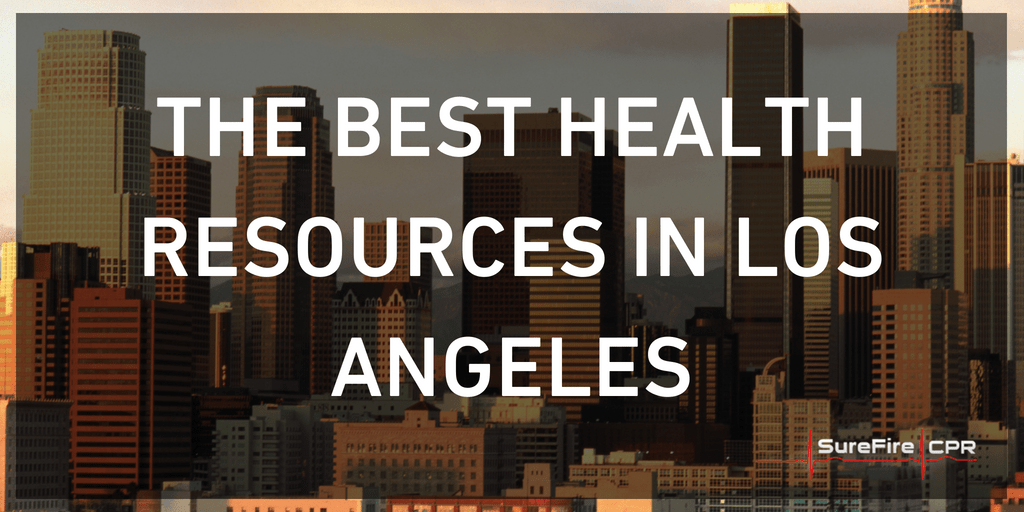The Best Health Resources In Los Angeles

Los Angeles County is home to more than 10 million people, many of whom do not have access to or the ability to pay for medical, health and personal safety services. The resources listed in this blog provide a variety of services to meet the needs of all L.A. County citizens, regardless of their medical […]
States Move to Protect Good Samaritans Performing CPR
Sad but true, we live in an extremely litigious society – one where a good Samaritan can actually be sued for trying to save a life. How does the good Samaritan law work? Check out this week’s blog post!
Revised CPR Technique Hopes to Boost the Frequency of Bystander CPR
Every five years, the International Liaison Committee on Resuscitation and American Heart Association revisit research and data and in turn, issue changes to the CPR administration. In October 2010, a significant change was made: a shift away from the ABC technique (airway, breathing, and circulation) and towards a CAB approach (chest compressions, airway, and breathing.)
What To Do If Someone Is Choking
Would you know what to do if someone you were sharing a Valentine’s Day meal with began to choke? There may only be minutes for you to respond and potentially save a life!
Southern California CPR Training and Certification
Whether you are a healthcare provider, fitness instructor, teacher, or simply a layperson looking to add CPR or BLS to your skill set, there are a number of programs in Orange County and in the greater Los Angeles area that offer classes. Check out SureFire CPR!
Another Day, Another Life Saved
As reported by KELOLAND.com, two teenagers in Sioux Falls, SD saved the lives of two younger boys who nearly drowned in an apartment complex swimming pool. Learn how it happened in our SureFire CPR blog post!
Tracing the Three Phases on CPR Evolution and Training
The evolution of CPR as a practical life-saving technique can be very broadly broken up into three stages – each development bringing with it greater accessibility to the general public. Read our blog post to find out more!
New Study Analyzes the Optimal Timeframe for Administering CPR
Does CPR have a timeframe? When will it work? Can you do too much CPR? Check out this week’s blog post!
Interested in Teaching Aerobics? Now is the Time
Want to make some extra money? Aerobics could be the way! Make sure you learn CPR first!
Online CPR Training Courses May Not Be All They Seem
Nowadays, it seems everything can be done on-line. Just think about your daily routine: you pay your bills, shop, and make travel reservations without leaving your home. And while it’s true that certain tasks are conducive to the on-line experience, others are not. Can you really learn CPR online?
When CPR is Needed, the AMA Recommends How to Respond
Even if an individual is not completely certified in CPR, the American Heart Association generally recommends that bystanders nonetheless perform certain actions to help a victim. Read on to find out more in the SureFire CPR Blog!
Email Hoaxes Shed Light on the Importance of Professional On-Site CPR Instruction
Email hoaxes, of course, are nothing new. Unsuspecting victims may pass along their credit card information to complete strangers; others may reveal their passwords to their Facebook or e-mail accounts.
Yet some hoaxes are more serious than others – particularly those with life or death implications. Have you heard of “Cough CPR?” If not, check it out in this month’s blog post.
Understanding Tachycardia
A normal resting heart rate for an adult ranges from 60 to 100 beats per minute. An athlete may be closer to 40 beats per minute. A lower heart rate typically implies more efficient heart function meaning an individual is in great cardiovascular shape.
What is Tachycardia? Check out this month’s blog post!
Debating the Role of Mandatory CPR Classes for High School Students
We all know that cardiac arrest can happen at any time, only underscoring the importance of CPR training for the general public.
This is why many companies offer onsite CPR training for their employees – you never know when you’ll need it.
It is also why a debate has surfaced over CPR training in high schools. Specifically, people are arguing that CPR training should be a mandatory graduation requirement for high school students.
First Aid for Hair Salons (Part 3 – Bloodborne Pathogens)
This month’s blog post covers bloodborne pathogens in the Hair Salon. Check it out to learn how to keep your salon staff and clients safe!
